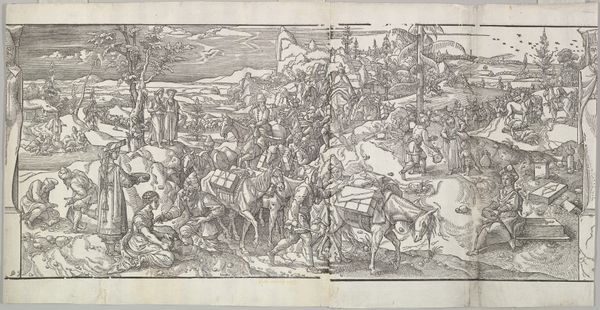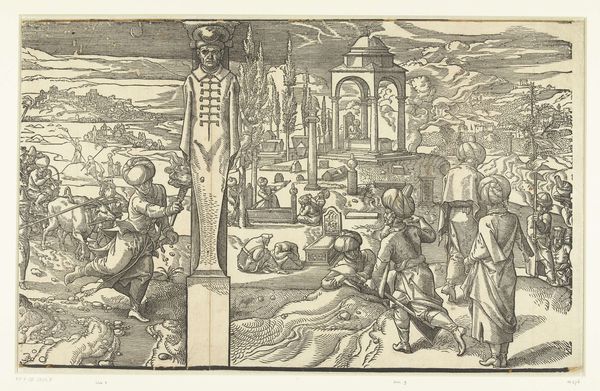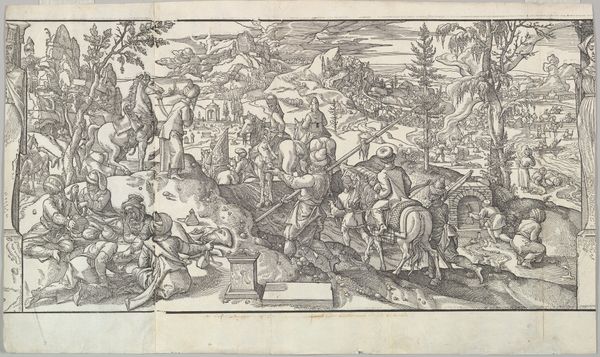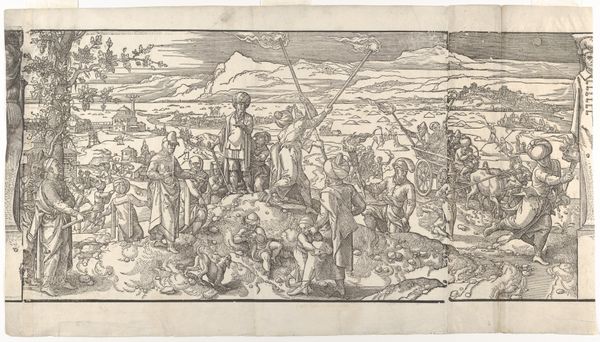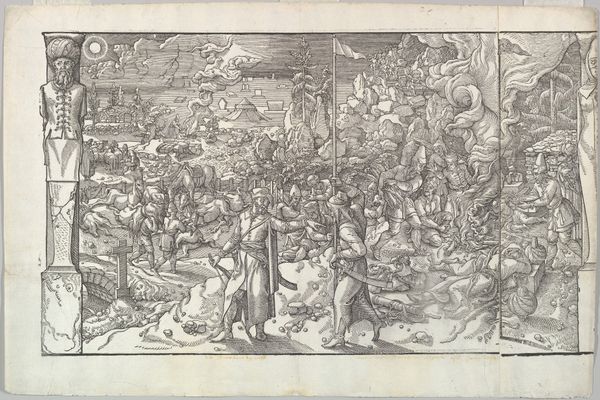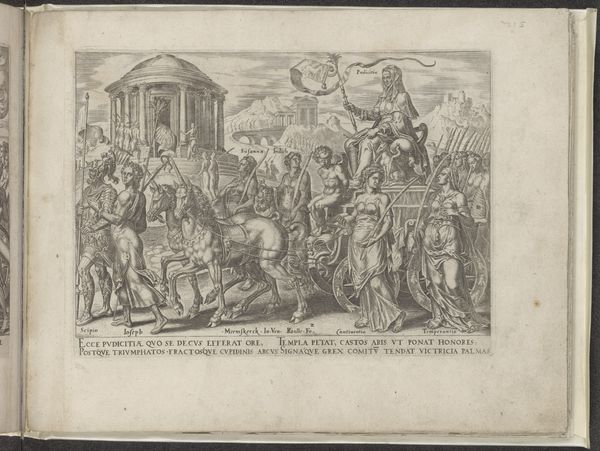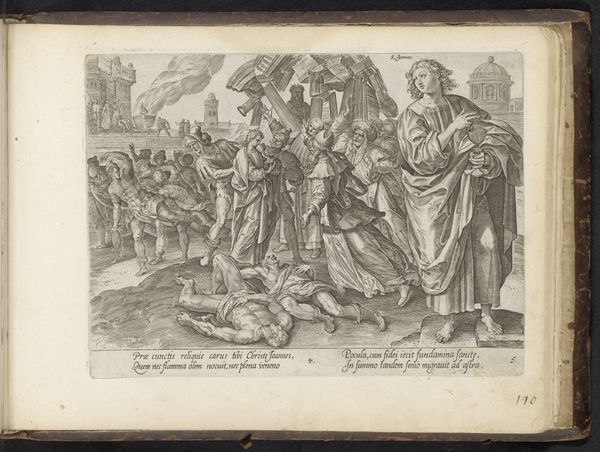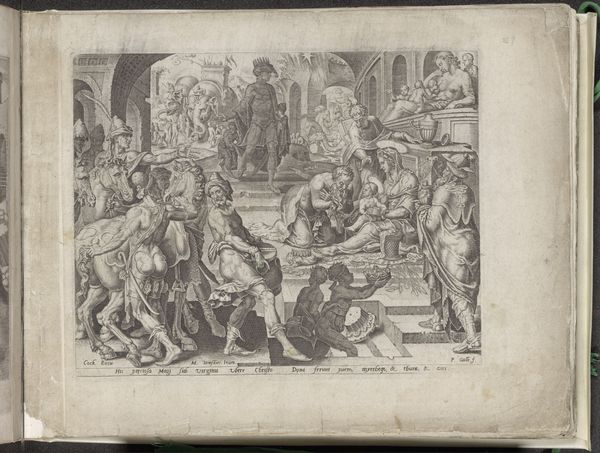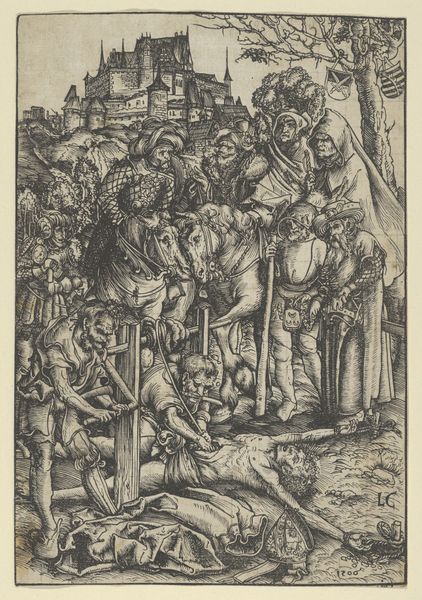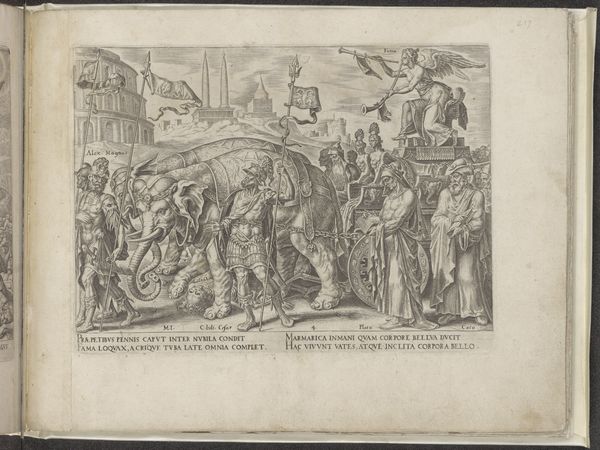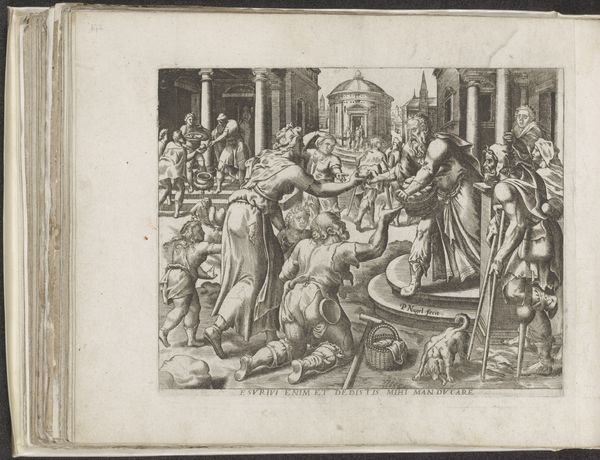
A Turkish Funeral from the frieze Ces Moeurs et fachons de faire de Turcz (Customs and Fashions of the Turks) 1553
0:00
0:00
drawing, print, engraving
#
drawing
# print
#
figuration
#
11_renaissance
#
islamic-art
#
history-painting
#
engraving
Dimensions: Sheet: 13 11/16 × 21 1/4 in. (34.7 × 53.9 cm)
Copyright: Public Domain
Editor: So, this is "A Turkish Funeral from the frieze Ces Moeurs et fachons de faire de Turcz (Customs and Fashions of the Turks)," a print made by Pieter Coecke van Aelst in 1553. It looks so detailed! The composition seems divided between the close foreground with the procession and a detailed distant background. What aspects of the piece stand out to you? Curator: Note how the artist employs contrasting visual planes. The foreground presents an intimate view of figures, drawn with tight hatching to delineate form and texture, especially of the garments. How does this close rendering of figures play against the panorama in the background? Editor: Well, the background, while detailed, feels more illustrative and less concerned with the textures; it creates a depth of field, a wide open space, in contrast with the focus of the figures in front. Curator: Precisely. Observe also the linear precision achieved through engraving, and how it structures the visual field into discrete components. Do you find a hierarchy, or a focal point, within this composition? Editor: The figures carrying the coffin seem to be the main point of focus; they are separated and slightly larger than those leading. The repetition of the turbans and bodies creates a certain rhythm that pulls the viewer towards the coffin as it slowly processes through space. Curator: Indeed. But also consider the very strong linear framing the image—especially on the right margin with what seem to be columns—compared to the looser and more visually receding left edge. How does this asymmetry impact your reading? Editor: It creates a feeling of… I don't know… being an incomplete glimpse of another place, especially with the slight presence of other characters and tombstones; perhaps implying the journey and story go beyond the single print. I now understand the balance between meticulous engraving and the story more fully. Curator: Precisely. The artwork is not simply an illustration; it is a complex interplay of forms, spaces and their associated cultural and historical implications.
Comments
No comments
Be the first to comment and join the conversation on the ultimate creative platform.
